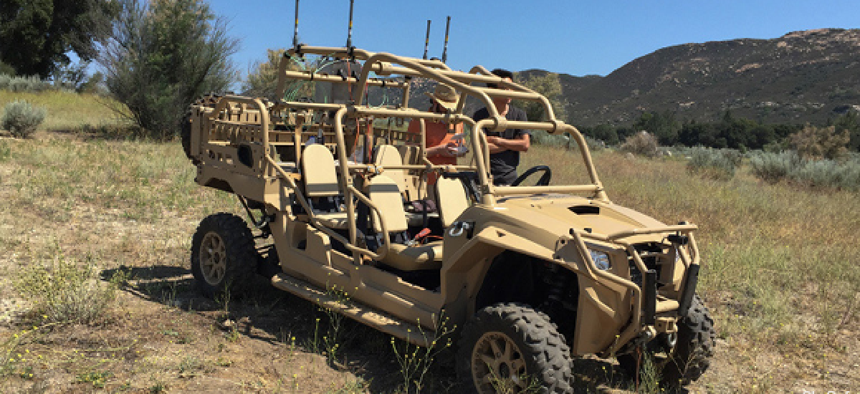Anti-drone system gets tryout with special forces

The Navy Special Warfare Command is testing a vehicle-mounted drone defense system designed to counter the growing threat of weaponized consumer drones on the battlefield.
The Navy Special Warfare Command is testing a vehicle-mounted drone defense system designed to counter the growing threat of weaponized consumer drones on the battlefield.
The commercially developed gear from San Diego-based SkySafe uses early detection and radio signal jamming to detect, identify, track and intercept commercial drones outfitted to attack U.S. forces.
Although the system is aimed at military applications, it could also be used by domestic security agencies to protect critical infrastructure, large public events and other vulnerable targets in the U.S., according to SkySafe CEO Grant Jordan.
The Navy Special Warfare Command oversees and conducts special operations and missions. It is primarily organized around the eight Navy SEAL teams. SkySafe worked through the Defense Innovation Unit Experimental to connect with the Navy, Jordan said.
The contract comes as terrorist groups have seized on the increasing availability of relative cheap and available consumer drones as a new weapon. In January, for instance, ISIS announced a new group, the “Unmanned Aircraft of the Mujahadeen,” that is modifying drone aircraft to carry explosives.
DIUx awarded SkySafe an initial contract in April for a system that is being used by the Marine Corps to passively identify, track and defeat threats posed by UAS during the day, at night and in all weather conditions.
It also awarded an April contract to Sensofusion for that company’s Airfence system, which can automatically detect, locate, track and take over UAS controls, as well as locate the vehicle’s operator in real time.
The SkySafe system, Jordan said, is a little larger than a toaster and can be mounted on vehicles to provide “a secure bubble” against approaching hostile unmanned aerial vehicles by using early detection and radio signal jamming.
Jordan likened the growing threat of weaponized consumer drone technology to the devastating rise of mass-produced improvised explosive devices in Iraq and other war zones in the early 1990s. IEDs became so common that they fundamentally changed the battlefield for U.S. troops on the ground.
SkySafe, Jordan said, is rolling out a series of tests and exercises for DOD customers over the next year; the company plans to have systems in the field in 2018.





